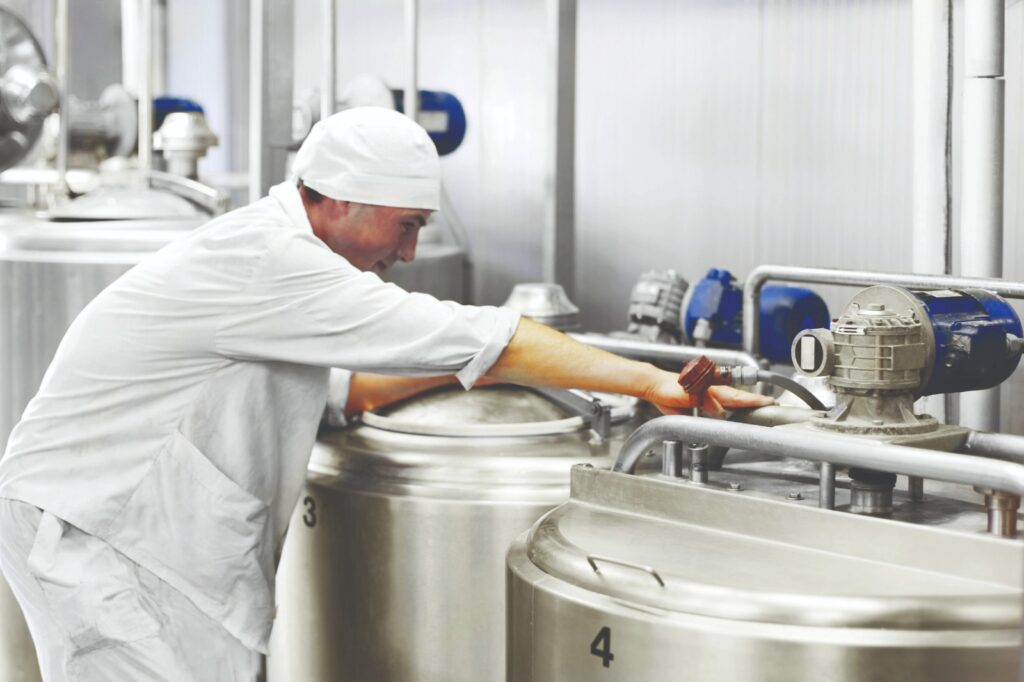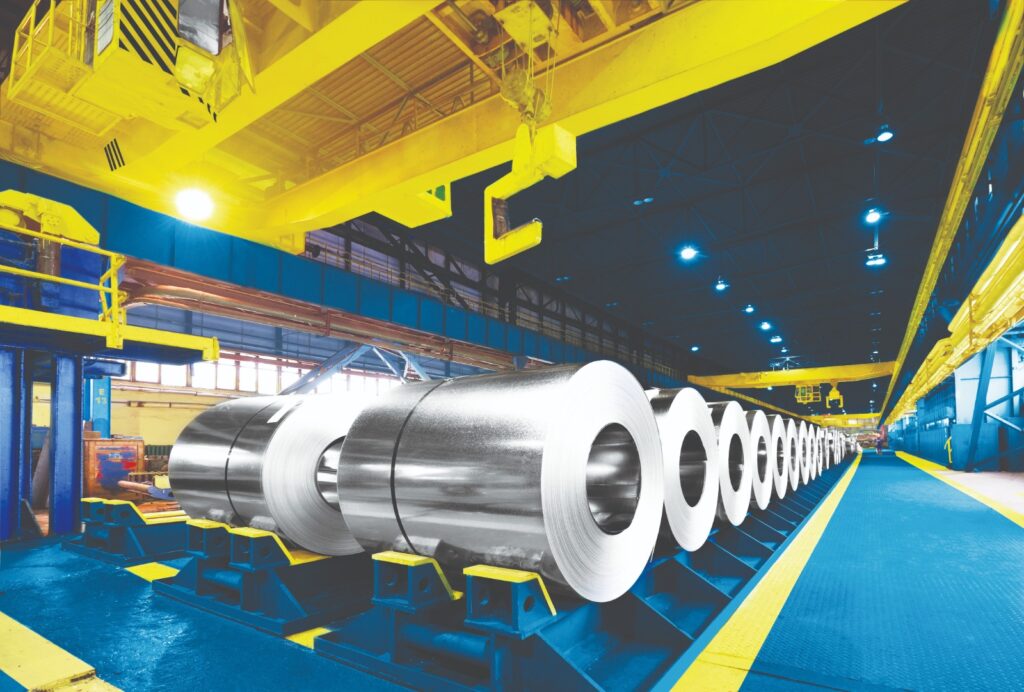
The industrial cleaning sector is continuously evolving, especially with the rapid introduction of advanced technologies. Identifying and integrating the right solutions is essential for operational efficiency and also for balancing cost, product safety and quality compliance. Industry leaders Adesh Kumar Tyagi, Lead-Administration & FM of Haldiram Snacks Food Pvt Ltd; Gokulakrishnan SS, Head (QA and R&D) of Amul Dairy; Vardhan Wali and Dharmendrasinh Rathod, Administration, ArcelorMittal Nippon Steel India Ltd, Hazira, converse with Clean India Journal on overcoming barriers and integrating new technologies. A report…

Product safety, hygiene standards and operational efficiency are inseparable in our line of work. Technology helps us meet all three, without compromise. Automated cleaning systems, especially CIP and COP, reduce downtime, ensure consistency and help meet GMP and ISO norms.”
— Adesh Kumar Tyagi
AUTOMATED CLEANING SYSTEM
In the fast-paced, high-volume environments of the FMCG and other industrial sectors, bringing in dependable automated cleaning systems is critical. These tools ensure thorough, repeatable and regulatory-compliant sanitation across production lines and facilities.
“Product safety, hygiene standards and operational efficiency are critical in such settings,” said Adesh Kumar Tyagi.
“The focus is on improving efficiency,” added Vardhan Wali.
“Cleaning is an endless process and new technologies are continuously incorporated. It is important to understand the significance of cleaning and consistently practicing it,” said Gokulakrishnan SS.
Microbiological safety is more critical than ever. Hygiene lapses can lead to foodborne outbreaks and milk processing must follow strict cleaning norms. Our cooperative model ensures high hygiene standards even at the farmer level — women-led teams monitor cleanliness and bacterial levels daily.”
— Gokulakrishnan SS

TECHNOLOGY VS HUMAN HANDS
Will the implementation of advanced technology reduce the need for human interference? Will it result in job losses? No, say the experts.
“On the contrary, it empowers them. Let me give you an example of a four-star hospital in Mumbai that incorporated robotic floor scrubber machines. Initially, the staff did not trust the machines, fearing job displacement. However, after training and operating the machines, productivity improved by 30%,” said Dharmendrasinh Rathod.
“The quality of milk brought in vessels by farmers is excellent. This is due to the long-standing culture where farmers, being owners of the cooperative dairy, prioritize cleaning their milk vessels,” said Gokulakrishnan.
TRAINING THE HANDS
To make automation completely trustworthy, the hands that operate them have to be constantly trained and their skills upgraded. Only then will the industry gain the benefit of using advanced technology.
“In the food and beverage industry where I come from, high standards have been set and in use, often at an AI level with integrated training. The challenge is to bring similar technological understanding to plant workers who may earn lower salaries. It is important to educate personnel to understand that technology increases their efficiency by transforming manual tasks into skilled jobs involving machine manipulation,” said Wali.

Real benefits come not just from installing machines but in training operators to become skilled machine handlers. Sustainability and compliance are deeply embedded in our operations. We are constantly evaluating machinery that meets our environmental and safety benchmarks.”
— Vardhan Wali
TECHNOLOGIES AND BENEFITS
Technology is designed and implemented to minimize downtime, optimize resource use and meet quality norms. The different types in use include:
Cleaning-in-Place (CIP): Applied to internal cleaning of closed systems such as pipelines, tanks, heat exchangers and mixing vessels. These systems circulate cleaning solutions through the internal surfaces of the equipment without disassembly, using defined cycles of pre-rinse, cleaning, rinse and sanitation.
“Benefits include consistent and efficient cleaning, reduced downtime and less labour,” said Tyagi.
Cleaning-out-of-Place (COP): Used for removable parts such as printers, valves and small tools. “Equipment components are dismantled and placed in COP tanks which use automated spray jets or submersion. These systems are effective for hard-to-clean parts, prevent contamination buildup and free operators for other tasks,” he added.
Automated Floor and Surface Cleaners: Deployed in production floors, corridors, storage rooms and packaging zones. “The types available include ride-on or walk-behind scrubbers with water and chemical tanks and robotic cleaners with AI integration for 24×7 operations. Benefits include reduced manual mopping, uniform floor hygiene and suitability for large facilities,” he said.
High-Pressure Jet Cleaning Systems: Used for external cleaning of large machinery, walls, ceilings, conveyor belts, crates and containers. “These systems spray high-pressure water or cleaning solution through nozzles to remove heavy soils, dirt, grease and residue. They also reduce cleaning time,” said Tyagi.
Steam Cleaning Systems: Applied in food handling zones, packaging lines and inaccessible corners. “They use superheated steam to kill bacteria and remove stubborn residues. Benefits include being eco-friendly, requiring minimal chemical use and being suitable for pathogen control and organic food production,” he said.
Conveyor Belt Cleaning Systems: Designed for in-line cleaning of belts used for moving products and packages. “These systems feature brushes, scrubbers and spray jets mounted under or above the belt. They clean during belt operation, either dry or wet. Benefits include maintaining hygiene during production and reducing belt wear and contamination risk. Automated washing tunnels and crate washers are applied to the cleaning of reusable trays and bins,” said Tyagi.
“While AI and scrubbing machines are implemented in areas such as offices and dining spaces, which are not directly near steel processing areas, the focus is on improving efficiency,” said Wali.
“Sanitization goes beyond simply applying a sanitizer; it requires preventing any deviation in the cleaning process. My management enforces a strong system where equipment undergoes CIP after eight hours of operation. Cleaning programs are automated, allowing for specific cycles for acidic cleaning, alkaline cleaning, or hot water cleaning with a simple click,” said Gokulakrishnan.
Robotic cleaners are not job killers, they are productivity boosters. Once our teams saw results of post-training, their faith in machines grew and output increased significantly.”
— Dharmendrasinh Rathod

CHALLENGES IN IMPLEMENTATION
While everyone agrees that automation is beneficial, there are challenges to overcome. Humans must identify the problem areas and AI should then be used to find solutions. Another challenge lies in selecting appropriate external cleaning services.
“The challenge in my industry is dust accumulation in machinery and the need for continuous maintenance. While mechanized road sweepers are in use, cleaning internal plant machinery coated with grease and sludge remains a challenge. There is a lack of specific machinery in the market for these tasks,” said Wali.
“Outsourcing the right vendor is important, particularly for corporate or industrial facilities. My organization maintains a stringent procurement process. We do not accept anything below expectations and engage with several vendors to find the right fit. This approach provides strong backup support across departments,” added Wali.

PRIORITISING MATTERS
When industries adopt automation for cleanliness, the objective is usually to improve productivity and ensure food safety. However, different industries may need different approaches and equipment.
“Without proper and timely cleaning, the milk industry will compromise on both productivity and safety. WHO statistics indicate many foodborne illness cases and fatalities annually and most outbreaks are microbial. While allergens are a concern, we must focus more on microbial threats such as salmonellosis, listeriosis and pathogenic E.coli,” said Gokulakrishnan.
“Milk is sealed at the society level, where cleaning units are maintained and verified by dedicated teams of women. These teams provide continuous training and validated chemicals. Bacterial counts and somatic cell count, crucial for animal health, are monitored and incentives are given for milk within accepted parameters,” he added.
ADDRESSING WASTE
Most industries generate both liquid and dry waste while maintaining high cleaning standards. The environmental impact of such waste must be addressed responsibly.
“While pursuing advancements in machinery and AI, sustainability must not be overlooked. My company is serious about environmental, health and safety compliance, especially in the 24-hour steel industry. We are actively seeking experts to operate the advanced cleaning machines we are implementing,” said Wali.
All the experts emphasized that the integration of technology in cleaning operations is not merely optional but a necessity. It is key to maintaining operational excellence, ensuring product integrity and promoting environmental stewardship. While initial resistance to change and skill gaps remain, the undeniable benefits of automation, improved efficiency, reduced human error and regulatory compliance, make it the way forward.
Industrialists must work towards a future where technology complements human effort, enabling cleaner, safer and more sustainable environments. Continued investment in smart solutions, workforce training and cultural change will be instrumental in realizing the full potential of modern industrial cleaning.
 CIJConnect Bot-enabled WhatsApp
CIJConnect Bot-enabled WhatsApp









